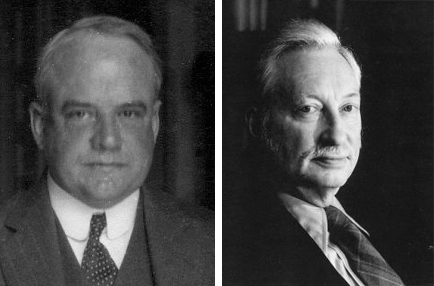Several years ago, I tried to sort out some of the confusion that surrounds the so-called Robinson Papyri, a collection of papyrus manuscripts accumulated by the archaeologist David M. Robinson (1880-1958) and eventually inherited by the classicist William H. Willis (1916-2000). The confusion results from seemingly conflicting descriptions of the collection published by Willis, and the close but unclear relationship between the Robinson Papyri and two other collections, the Mississippi Papyri and the Deaton Papyri. I had first encountered the Robinson Papyri because of my interest in still another intersecting collection, the Bodmer Papyri. Figuring out the Robinson Papyri became more urgent in 2015, when Dirk Obbink claimed that the Robinson Papyri were the source of the now infamous Sappho papyrus that he published (“P.Sapph.Obbink”).
This series of posts (here, here, and here) raised a number of questions. Many of them have now been answered by an informative and thorough new article:
Daniel B. Sharp, “The Provenance of the Robinson and Mississippi Papyri,” Archiv für Papyrusforschung 69 (2023) 162-192
Sharp’s detailed archival research at the University of Mississippi, Duke University, and elsewhere has uncovered some of the reasons for the confusion within these collections. What all these collections have in common is the figure of Willis, who had physical custody of the Robinson Papyri (which he owned through inheritance), the Mississippi Papyri, the Deaton Papyri, and a few scraps of Bodmer Papyri. Sharp demonstrates quite clearly that Willis allowed these groups to intermingle in different ways. This matters because Willis owned the Robinson Papyri but not the other collections. It is thus surprising to learn that some of the Mississippi Papyri and Deaton Papyri became Robinson Papyri and were donated to Duke as the personal property of Willis. As Sharp notes in the case of P.Deaton 28, which was donated to Duke by John Deaton:
“It is impossible to know with certainty why Willis decided to claim personal ownership of P.Deaton 28 rather than donate it to Duke in Deaton’s name. What can be documented is that Willis had P.Deaton 28 appraised for $12,000 as part of his donation to Duke and that he claimed those donations as tax write-offs.”
Willis’s numerous and important contributions to classical studies and papyrology are well known. Sharp’s research adds a new dimension to Willis’s academic legacy and sheds light on the entanglement of papyrologists and the antiquities trade in the twentieth century.



Pingback: Biblical Studies Carnival #212 for November 2023 - Reading Acts
I hope Rutgers updates their page to record that Robinson appears to have plagiarized one book and one chapter from a student https://bmcr.brynmawr.edu/2015/2015.02.03
The Manuscript Migration Lab at Duke University is an ongoing project to “examine the history of manuscripts held by the David M. Rubenstein Rare Book & Manuscript Library.”
https://fhi.duke.edu/labs/manuscript-migration-lab/
Pingback: The Upcoming Sale of the Crosby-Schøyen Codex (Just How Old is this Book?) | Variant Readings